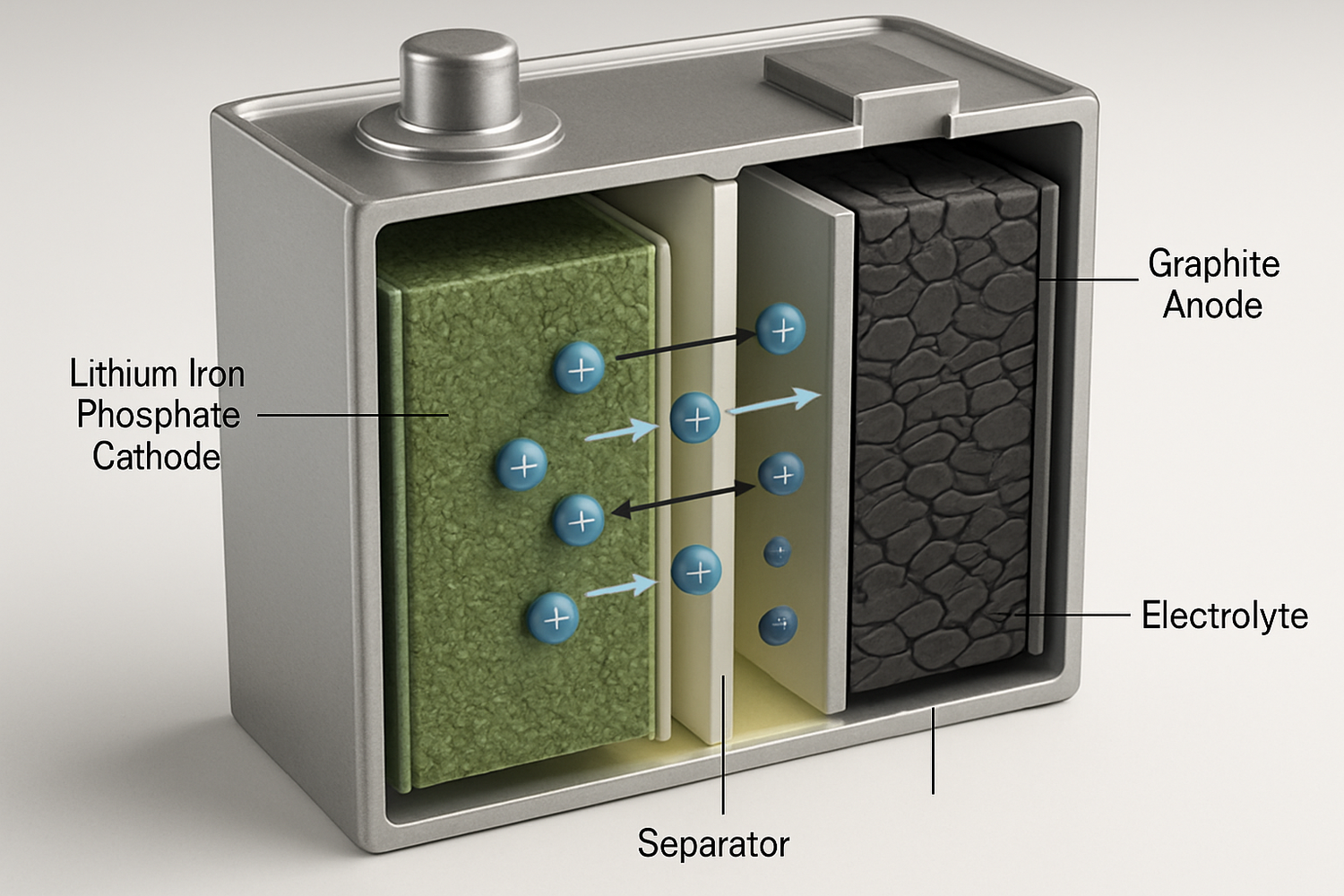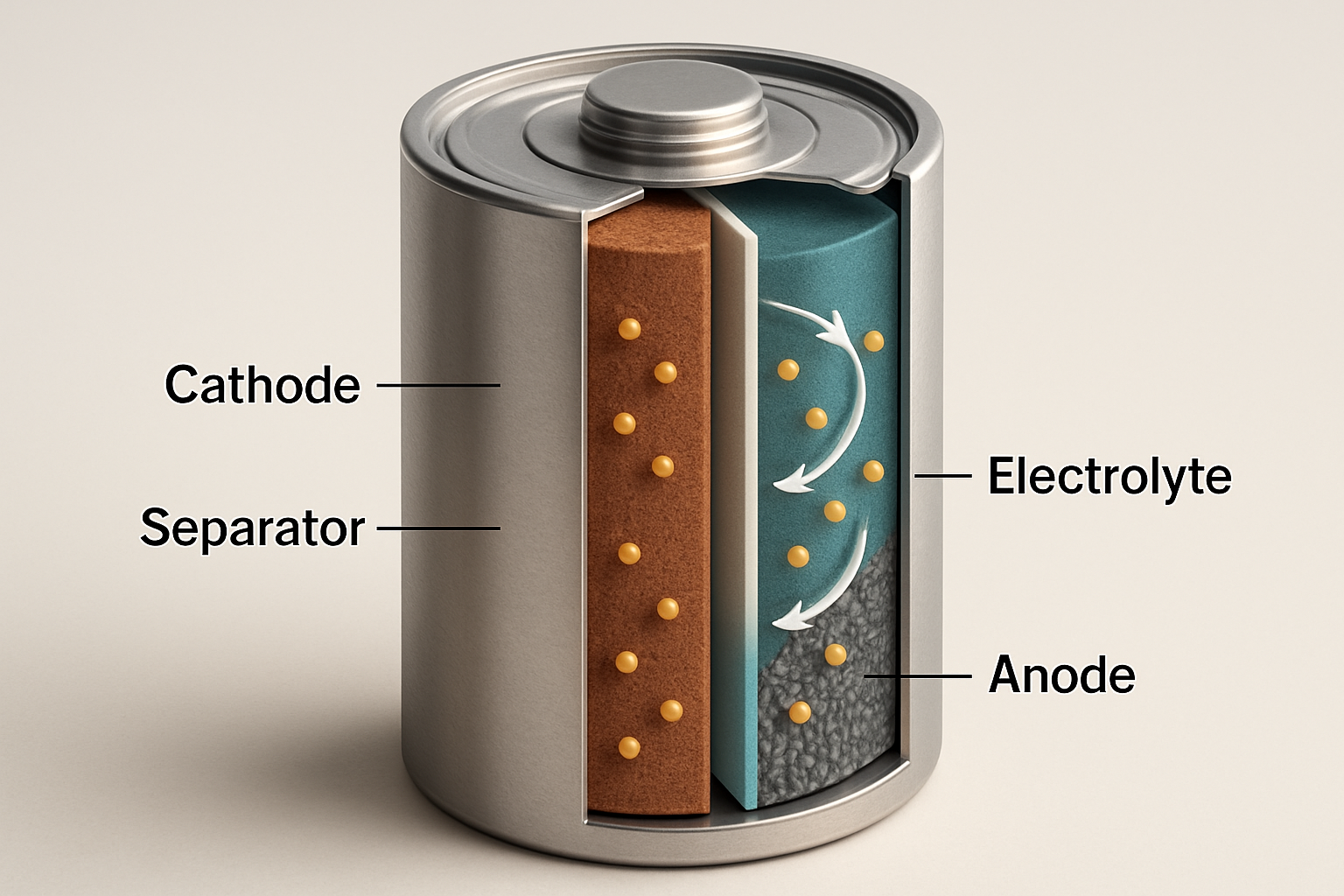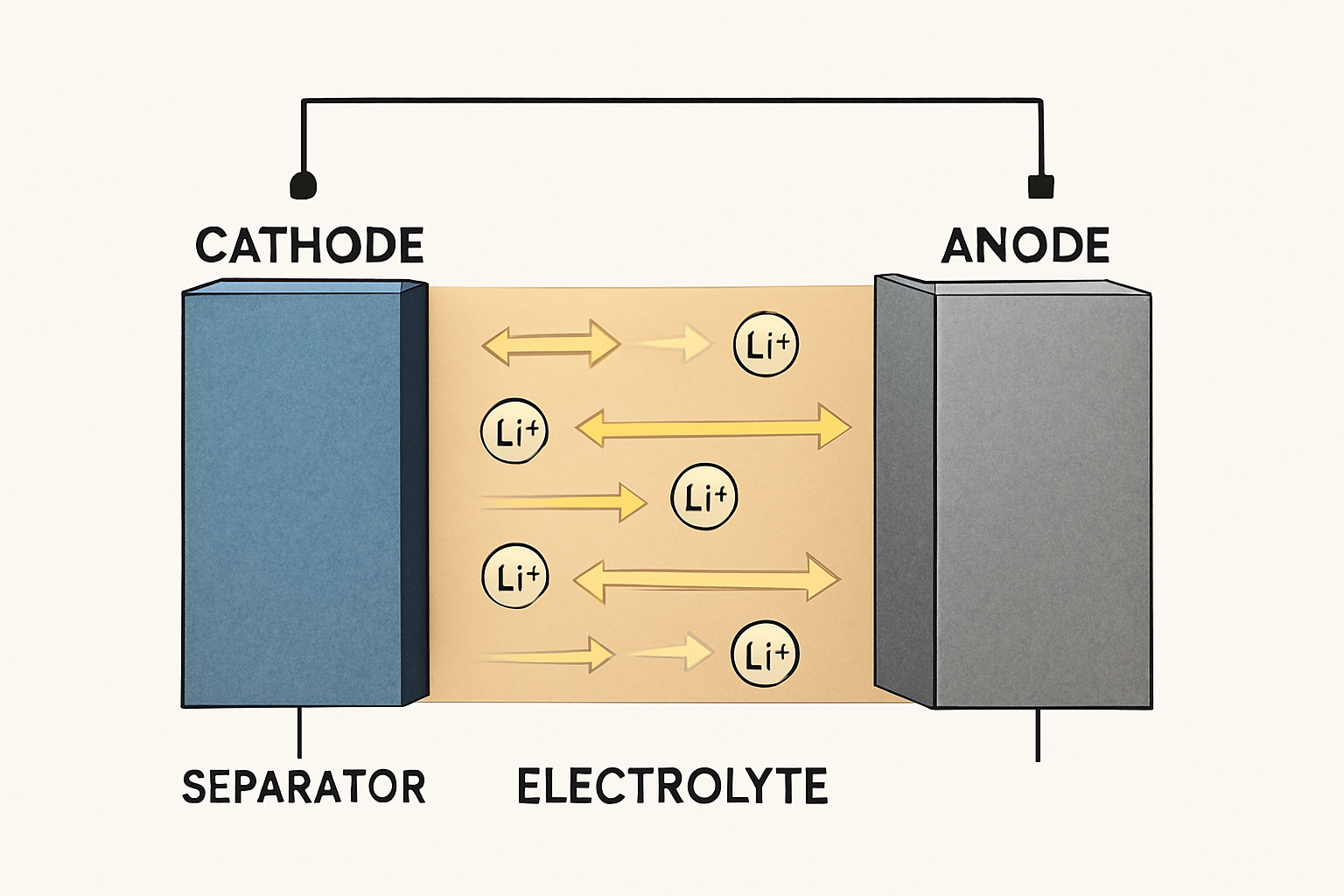In the evolving landscape of energy storage, the Lithium Iron Phosphate battery, commonly known as LiFePO4 or LFP, has emerged as a highly reliable and safe option. Initially identified as a battery cathode material in 1996, this technology has matured into a leading choice for demanding applications, from home energy storage systems to electric vehicles. Its unique chemistry provides a balanced set of features that distinguish it from other lithium-ion variants.
The Core of LiFePO4: A Look at the Chemistry
Every lithium-ion battery operates on the same basic principle: lithium ions move between a positive electrode (cathode) and a negative electrode (anode) during charging and discharging. However, the specific materials used for these components dramatically alter the battery's performance. The defining feature of a LiFePO4 battery is its cathode, which is made from lithium iron phosphate (LiFePO4).
Cathode Chemistry: The LFP Advantage
The cathode is the primary determinant of a lithium-ion battery's characteristics. In an LFP battery, the use of lithium iron phosphate creates an exceptionally stable structure. The strong covalent bond between the phosphorus and oxygen atoms in the phosphate group is more robust than the bonds in cobalt-based cathodes. This inherent stability is the foundation of LFP's renowned safety profile, making it highly resistant to overheating and thermal runaway.
Anode, Electrolyte, and Separator
Beyond the cathode, a LiFePO4 battery contains other standard components. The anode is typically made of graphitic carbon, which accepts and releases lithium ions during operation. An electrolyte, a lithium salt dissolved in an organic solvent, acts as the medium for ions to travel between the electrodes. Finally, a separator keeps the anode and cathode physically apart to prevent short circuits while allowing ions to pass through.
Key Characteristics and Advantages of LiFePO4 Technology
LiFePO4 batteries offer a compelling combination of safety, longevity, and reliable performance, making them an excellent investment for long-term energy storage needs. Their rise in popularity is directly tied to these tangible benefits.
Superior Safety and Thermal Stability
Safety is the most significant advantage of LFP chemistry. The stable iron phosphate cathode material is not prone to decomposing at high temperatures, which drastically reduces the risk of thermal runaway—a hazardous condition where a battery overheats uncontrollably. This makes LFP an intrinsically safer choice for residential and commercial applications where safety is a primary concern. Furthermore, these batteries are cobalt-free, alleviating environmental and ethical concerns associated with cobalt mining.
Exceptional Lifespan and Durability
LiFePO4 batteries are built for the long haul. They can endure thousands of charge-discharge cycles with minimal degradation. A high-quality LFP battery can last for 5,000 cycles or more, translating to a service life of 10 years or longer under normal operating conditions. This durability makes the total cost of ownership very competitive over time. Key metrics like a high Depth of Discharge (DoD) allow you to use more of the battery's stored energy in each cycle without significantly impacting its lifespan. For a deeper analysis of these metrics, the ultimate reference on solar storage performance offers valuable insights.
Reliable Performance and High Efficiency
LFP batteries deliver consistent power output due to a very flat discharge voltage curve. This means a device will receive steady voltage until the battery is nearly depleted. They also boast high charge and discharge efficiency, typically above 90%, which minimizes energy loss during use. The technology has advanced significantly, making it a viable alternative to traditional lead-acid batteries, which suffer from low efficiency, shorter lifespans, and high maintenance.
| Feature | LiFePO4 Battery | Lead-Acid Battery |
|---|---|---|
| Typical Cycle Life | 3,000 – 5,000+ cycles | 300 – 500 cycles |
| Depth of Discharge (DoD) | 80-100% | 50% |
| Efficiency | ~92% | ~80-85% |
| Maintenance | None required | Regular fluid checks |
Practical Applications for LiFePO4 Batteries
The unique advantages of LFP technology make it suitable for a wide range of applications, particularly those requiring frequent cycling and high levels of safety.
Home Energy Storage Systems
For homeowners with solar panels, a LiFePO4 battery is an ideal choice for a home battery storage system. It can efficiently store excess solar energy generated during the day for use at night or during power outages, promoting energy independence. Their long cycle life is perfect for the daily charging and discharging patterns of a solar energy storage system.
Off-Grid and Mobile Power
The durability and safety of LFP batteries make them perfect for off-grid solar solutions, such as in cabins, farms, and RVs. A 12v 100ah LiFePO4 lithium battery is a popular choice for these applications, providing reliable power without the risks associated with other chemistries. Their ability to handle deep discharges makes them a robust deep cycle lithium battery for sustained power needs.
Electric Vehicles and Industrial Use
The automotive industry has increasingly adopted LFP batteries, particularly for standard-range electric vehicles. According to the International Energy Agency's The State of Energy Innovation report, the market share of LFP batteries in EVs has grown rapidly, demonstrating their reliability and cost-effectiveness on a massive scale. This same robustness makes them suitable for industrial applications like forklifts and backup power systems.
A Balanced Perspective: Considerations and Limitations
While LiFePO4 technology offers many benefits, it's important to understand its limitations to determine if it's the right fit for your needs.
Energy Density
Compared to some other lithium-ion chemistries like NMC (Nickel Manganese Cobalt), LFP batteries have a slightly lower energy density. This means they may be larger and heavier for the same amount of energy storage capacity. For stationary applications like a home battery storage system, this is rarely a significant issue, but it can be a consideration for certain portable electronics.
Cold Weather Performance
The performance of LFP batteries can be reduced in extremely cold temperatures, typically below freezing. However, many modern LFP batteries are equipped with an integrated Battery Management System (BMS) that includes temperature protection and even heating elements to ensure reliable operation in colder climates.
Looking Ahead
The Lithium Iron Phosphate battery stands out as a mature, safe, and durable energy storage solution. Its strong safety profile, extended lifespan, and reliable performance make it an excellent choice for anyone seeking to gain control over their energy usage, particularly in residential solar and off-grid applications. As technology continues to advance, LFP is poised to remain a cornerstone of the clean energy transition for years to come.
Frequently Asked Questions
What makes LiFePO4 batteries safer than other lithium-ion types?
The primary reason for their safety is the stable chemical structure of the lithium iron phosphate cathode. The strong P-O covalent bond is less likely to break down and release oxygen during stressful situations like overcharging or high temperatures, which is the primary trigger for thermal runaway in other chemistries.
How long does a LiFePO4 battery typically last?
A LiFePO4 battery can last for a very long time, often between 5 to 10 years or more. Its lifespan is typically measured in charge cycles, with most high-quality LFP batteries rated for 3,000 to 5,000 cycles before any significant capacity loss.
Can I use a LiFePO4 battery in cold weather?
Yes, but performance can be affected in extreme cold. LFP batteries function well in a wide temperature range, but their efficiency may decrease below 0°C (32°F). For cold climates, it is recommended to choose a battery with a robust Battery Management System (BMS) that provides low-temperature protection to prevent charging in freezing conditions, which can cause damage.





Leave a comment
All comments are moderated before being published.
This site is protected by hCaptcha and the hCaptcha Privacy Policy and Terms of Service apply.